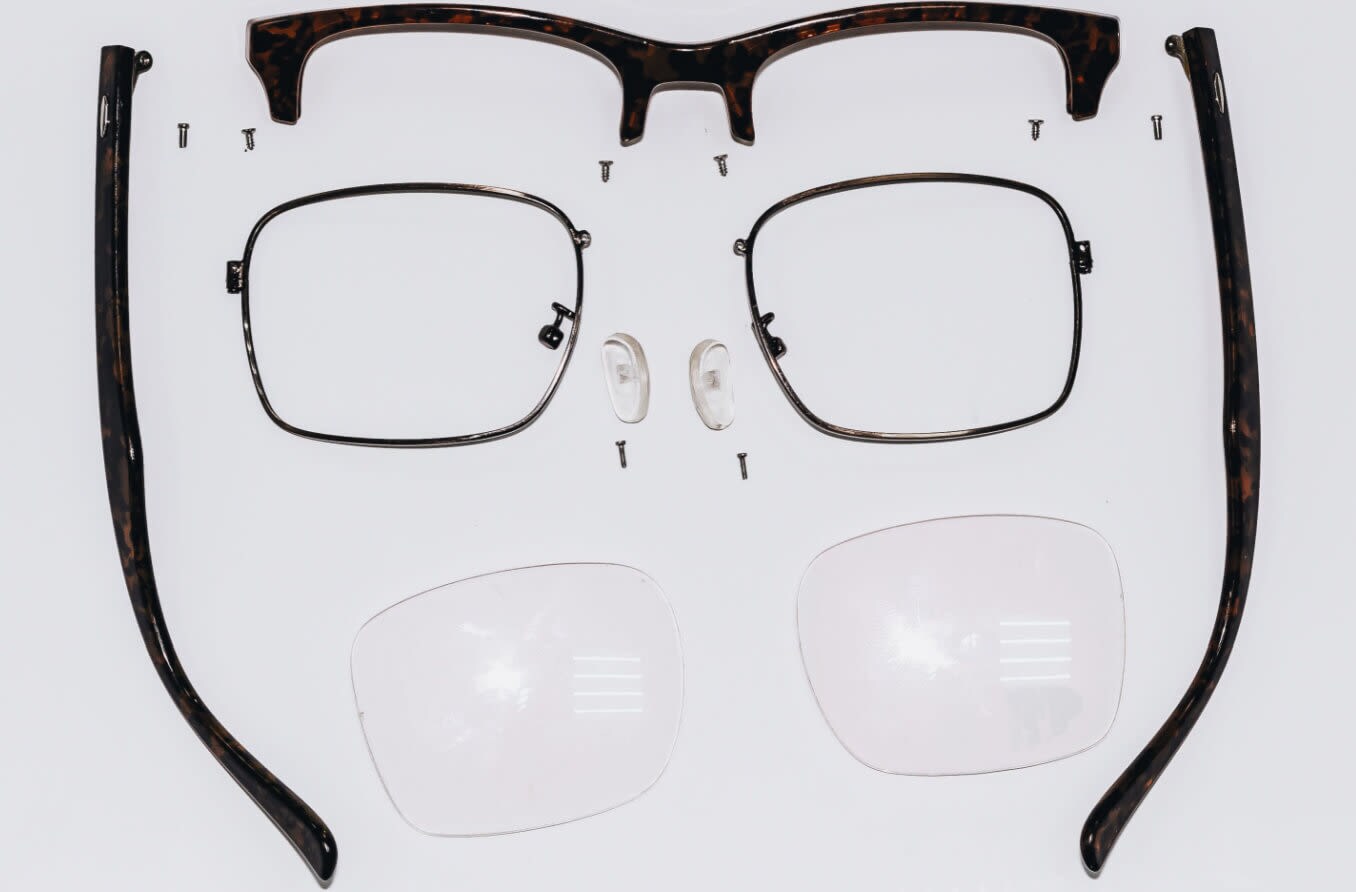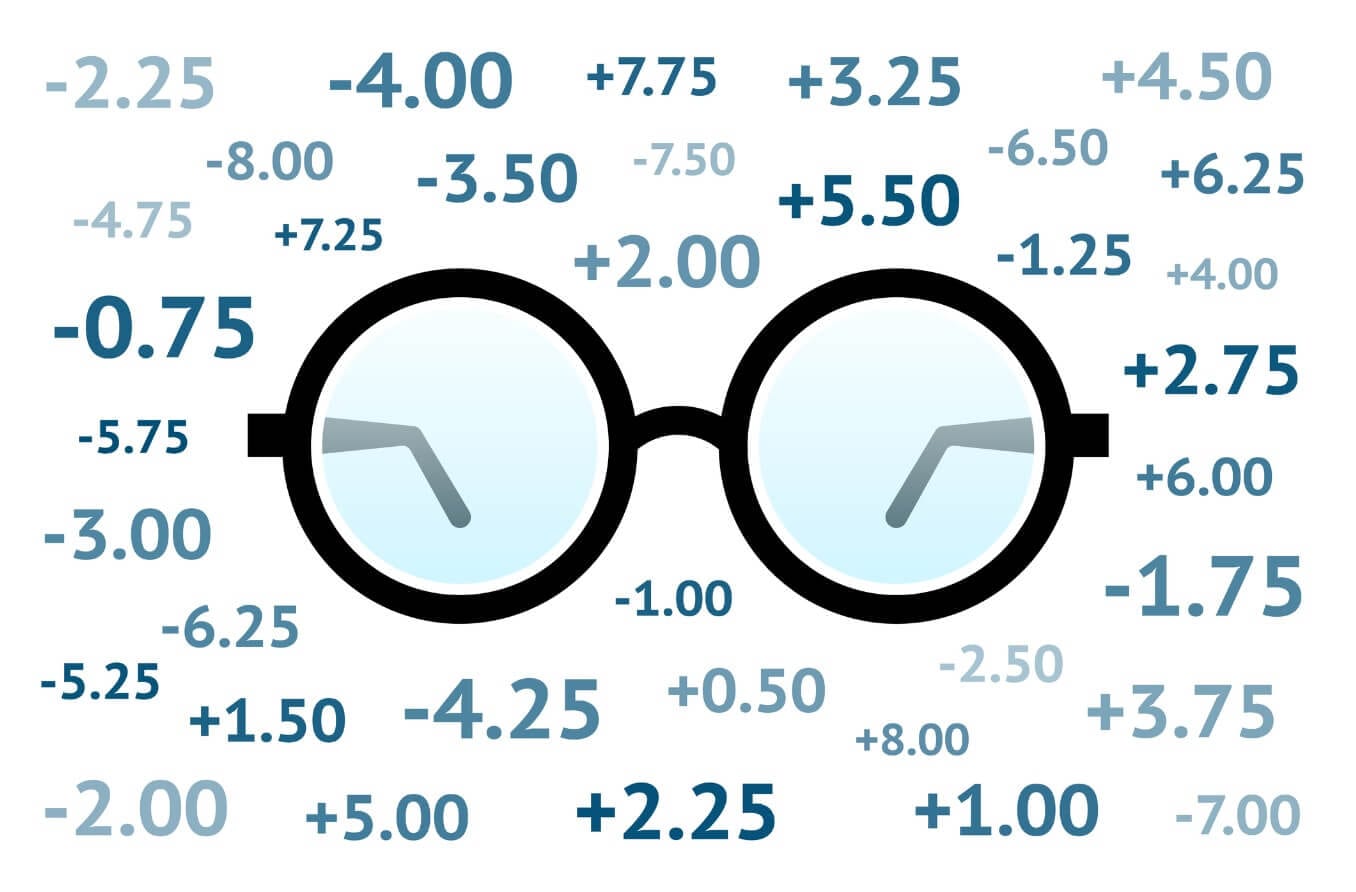Sphere (or SPH)
This stands for “spherical error;” it represents how nearsighted or farsighted you are.
In the sphere column, do you see a minus sign followed by numbers in each row? That means you’re nearsighted, and closer objects appear more clearly.
If you see plus signs followed by numbers, you’re farsighted, meaning you can see objects better when they’re farther away.
To find out how extensive your nearsightedness or farsightedness is, move to the numbers next to the plus or minus signs.
For the nearsighted, the American Optometric Association (AOA) has determined the following levels of severity:
If your number is between -0.25 and -2.00, you have mild nearsightedness
If your number is between -2.25 and -5.00, you have moderate nearsightedness
If your number is lower than -5.00, you have high nearsightedness
For the farsighted, the AOA classifies it this way:
If your number is between +0.25 and +2.00, you have mild farsightedness
If your number is between +2.25 and +5.00, you have moderate farsightedness
If your number is greater than +5.00, you have high farsightedness
For both types, the closer you are to zero the better your vision is.
For example, even though measurements of -0.75 and -1.25 both qualify as mild nearsightedness, the person with a spherical error of -0.75 is technically closer to 20/20 vision without their glasses on.
READ MORE: What is a diopter
Cylinder (or CYL)
This value only applies to people who have astigmatism, a common problem with the curvature of the cornea in front of the pupil.
The larger this number is, the more significant the level of astigmatism is. More significant astigmatism can mean a greater effect on your unassisted vision quality.
Axis
If you have a cylinder number listed, you’ll also have an axis number. This is only an angular measurement of astigmatism and doesn’t directly affect vision quality.
Add
This specifically relates to presbyopia, the loss of your ability to focus on near objects as you age. Presbyopia is a normal part of the aging process, and it usually kicks in sometime after age 40.
The add value — short for added magnifying power — relates to the bottom lens in multifocal glasses. Unlike sphere and cylinder, this is always a positive number (even if it isn’t always preceded by a plus sign). The higher the add number, the more powerful the bottom lens is.
PD
PD stands for pupillary distance, the space between your eyes’ pupils in millimeters. This is a reference number for glasses and also has no effect on how good or bad your vision is.
It’s common for two different PD measurements to be present. This means one pupil is a little further from your nose than the other one. This can be as little as one millimeter and again, has no effect on vision power.
While the prism field is less common than the ones listed above, it’s important for those who need it, as it’s used to address eye alignment issues. For more information on what this means along with additional insight, check out our full guide on how to read your glasses prescription.











